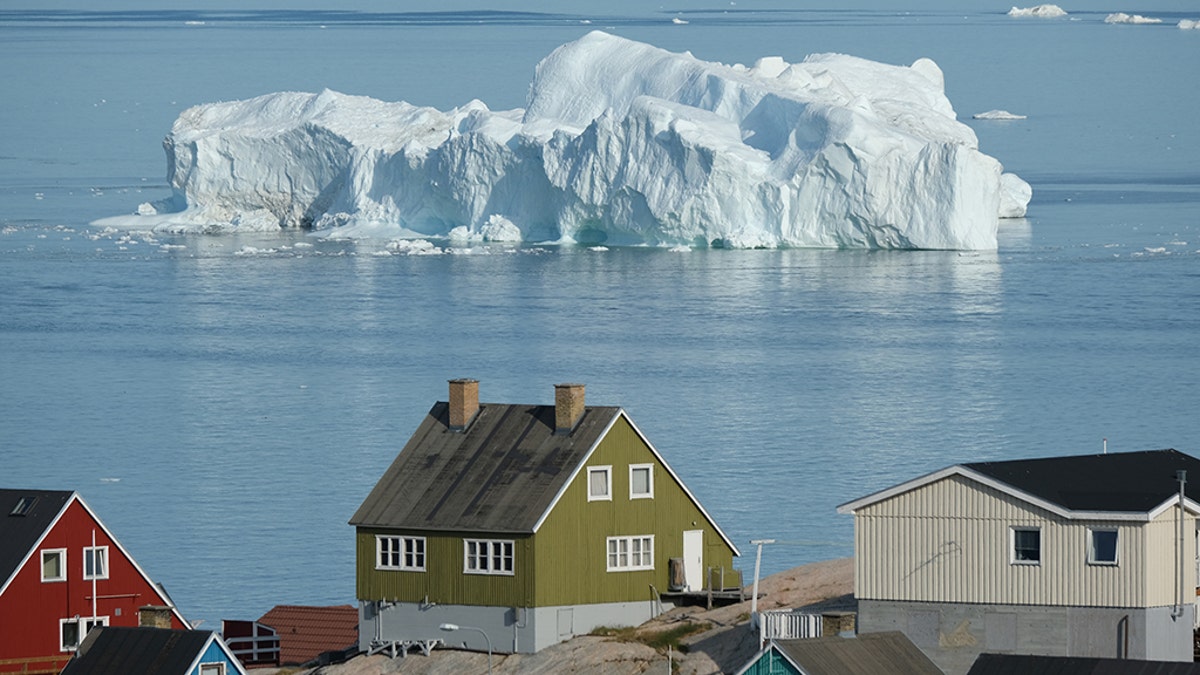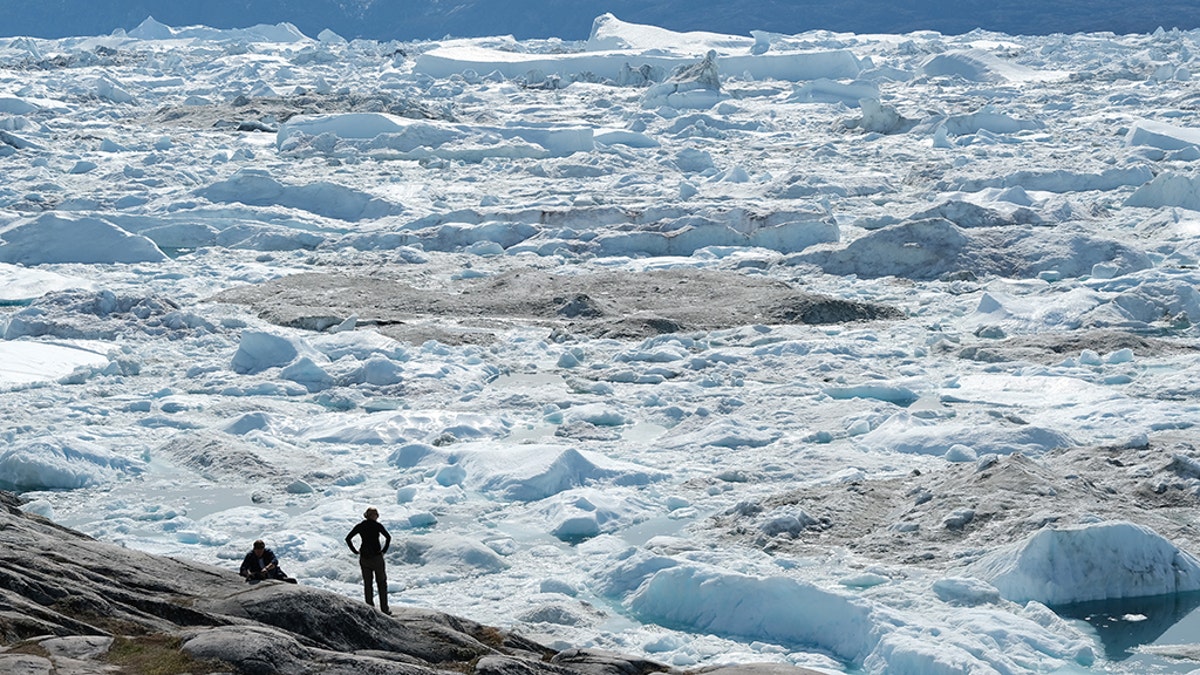
An iceberg floats in Disko Bay behind houses during unseasonably warm weather on July 30, 2019 in Ilulissat, Greenland. (Photo by Sean Gallup/Getty Images)
As Europe reels from a record-breaking heat wave, which has halted the Tour de France and sparked major fires in France, a concerning consequence has been laid bare in striking images from Greenland.
They show how the extreme Saharan blast of heat has taken a devastating toll on the nation, which is home to the world’s second-largest ice sheet — meaning knock-on effects for sea levels and weather across the globe.
Heat records in France, Belgium, the Netherlands and Germany tumbled in recent days as hot air surged from North Africa and Spain.
HEAT WAVE SMASHES RECORDS IN EUROPE, CREATES TRANSPORTATION CHAOS AS DOZENS SICKENED
The UN weather agency voiced “concern” as the heat wave moved toward Greenland earlier this week, saying it “will result in high temperatures and consequently enhanced melting of the Greenland ice sheet.”

In this aerial view melting ice forms a lake on free-floating ice jammed into the Ilulissat Icefjord during unseasonably warm weather on July 30, 2019 near Ilulissat, Greenland. (Photo by Sean Gallup/Getty Images)
World Meteorological Organization spokeswoman Clare Nullis added that ice had already been melting at high levels over the last few weeks in Greenland, even before the heat wave struck.
Greenland’s ice sheet usually melts during the summer.
However, it started melting a lot earlier than usual this year, in May, and the current heat wave is expected to accelerate the process.
RAIN IS MELTING GREENLAND ICE SHEET EVEN IN WINTER, ALARMING STUDY SAYS
Nullis said Greenland’s ice sheet lost 160 billion tons of ice in July alone — roughly the equivalent of 64 million Olympic-sized swimming pools.
“Normally, when you get a temperature record broken it’s by a fraction of a degree,” said told reporters. “What we saw yesterday was records being broken by two, three, four degrees — it was absolutely incredible.”
Shocking images of the heat wave’s toll on Greenland come as Europe is still reeling from a heatwave that continues to break records.
Britain has officially had its hottest day on record. Weather agency the Met Office says the temperature reached 38.7 C (101.6 F) at Cambridge University Botanic Garden in eastern England during last week’s heat wave.
CLIMATE TALKS HELD AS ARCTIC ICE MELTS, CONCERNS GROW

Visitors look out onto free-floating ice jammed into the Ilulissat Icefjord during unseasonably warm weather on July 30, 2019 near Ilulissat, Greenland. The Sahara heat wave that recently sent temperatures to record levels in parts of Europe is arriving in Greenland. (Photo by Sean Gallup/Getty Images)
The temperature was recorded on Thursday and confirmed on Monday after “quality control and analysis” by the Met Office.
The previous UK record was 38.5C (101.3 F), set in August 2003. Temperature records fell across Europe last week as a suffocating heat wave swept up from the Sahara.
Met Office climate scientist Mark McCarthy said climate change was making extreme temperatures more common.
“Climate change has increased the likelihood and severity of heat wave episodes across Europe, which will have also increased the risks of a 40 Celsius temperature event in the U.K.,” he said.
— With wires
This story originally appeared in news.com.au.
